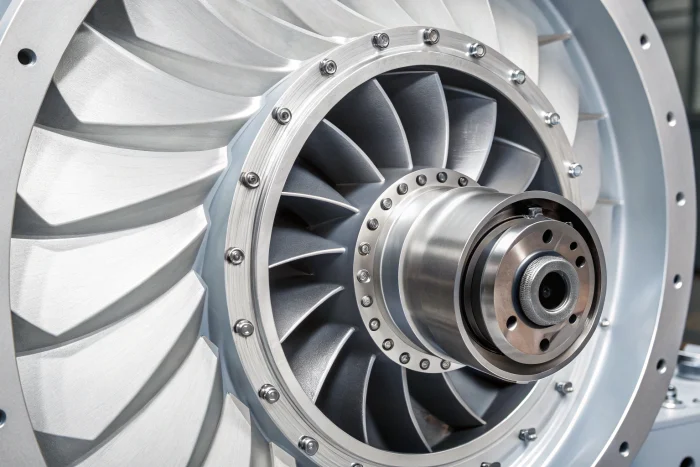Ceramics often carry a reputation for brittleness—but modern fracture toughness enhancements are transforming advanced ceramics into resilient, high-performance materials. Learn how we address brittleness and maximize ceramic toughness for demanding applications.
Brittleness typically describes a material’s tendency to fracture without significant plastic deformation. Many traditional ceramics (like porcelain) can crack or shatter under impact. However, advanced ceramics today incorporate specialized compositions and processing techniques to improve toughness—the ability to resist crack propagation and handle sudden stresses.

Why It Matters:
Reduced Risk of Sudden Failure
Higher toughness allows ceramic parts to withstand unexpected shocks or impacts, crucial in safety-critical industries (automotive, aerospace, medical devices).
Extended Service Life
By minimizing crack initiation and propagation, toughened ceramics see fewer failures over time, lowering maintenance and replacement costs.
Design Flexibility
When engineers can rely on materials with better fracture toughness, they can push the limits of lightweight, high-performance components without fear of brittleness-induced failures.
Improved User Confidence
For industries historically wary of ceramic brittleness, seeing proven toughness data builds confidence in adopting advanced ceramic solutions.
Microstructure Control
By carefully selecting and blending grains, reducing porosity, and optimizing grain boundaries, manufacturers enhance crack-deflection pathways.
Transformation Toughening
Zirconia-based ceramics often use a phase transformation mechanism (from tetragonal to monoclinic) when stressed. This transformation exerts a closing force on growing cracks, effectively “toughening” the material.
Ceramic Composites
Some advanced ceramics incorporate whiskers, fibers, or second-phase particles to halt crack growth and absorb impact energy.
Fracture Toughness (KIC)
Flexural Strength (ASTM C1161)
Charpy or Izod Impact Tests
Below is a representative table showcasing typical toughness values and brittleness characteristics of various advanced ceramics. Real-world data may vary by grade and processing.
| Material | Typical Fracture Toughness (MPa·m^1/2) | Relative Brittleness | Density (g/cm³) |
| Zirconia (ZrO₂) | 7 – 10 | Low – Moderate | 5.6 – 6.1 |
| Alumina (Al₂O₃) | 3 – 4 | High | 3.8 – 4.0 |
| Silicon Nitride (Si₃N₄) | 5 – 7 | Moderate | 3.1 – 3.3 |
| Silicon Carbide (SiC) | 3 – 4 | High | 3.1 – 3.2 |
Key Takeaways:
Still unsure which material is best? Get a free recommendation.
Automotive & Motorsport
Aerospace & Defense
Medical Implants
Industrial Tooling
Challenge:
A manufacturer of precision machinery experienced frequent ceramic part cracking when components were rapidly assembled under mechanical force.
Solution:
They switched from standard alumina to zirconia-toughened alumina (ZTA) with superior fracture toughness.
Outcome:
Explore More Case Studies or Contact Us to discuss a solution tailored to your industry.
We offer comprehensive solutions for brittleness minimization and toughness enhancement in ceramic components, from R&D to final quality checks.
Material R&D & Formulation
Precision Forming & Sintering
State-of-the-Art Machining
Quality Control & Testing
Expert Guidance & Support
While ceramics inherently have a crystalline structure that can promote brittleness, advanced engineering methods (transformation toughening, composite reinforcements) drastically reduce it. Complete elimination is rare, but significant toughening is achievable to the point where ceramics rival some metals in reliability.
All three properties are interrelated; increasing one might influence another. For example, zirconia may have slightly lower hardness than SiC, but offers higher fracture toughness. Our team can help you optimize the trade-offs based on your operational environment.
Not entirely. High toughness makes fractures less likely under normal conditions and reduces sudden failures, but extreme force or sharp impact can still cause damage. Proper design, assembly, and handling are crucial.
Thermal shock can exacerbate brittleness. Materials like silicon nitride excel in thermal shock environments. We also recommend design considerations—like controlled heating/cooling rates and coatings—to further protect against fracturing.
The cost can be higher than standard grades due to specialized additives and processes (e.g., yttria-stabilized zirconia). However, the long-term ROI often justifies the investment, especially if you avoid frequent part failures or downtime.
Depending on complexity, lead times can range from 4 to 8 weeks. Prototyping might be faster if we have standard tooling or shapes available.
Still have more questions?
Send us an inquiry or check out our blog for deeper dives into ceramic materials and industry trends.
Boost reliability and minimize failures in challenging environments by harnessing our expertise in ceramic toughness. Discover how we can tailor material compositions and manufacturing to meet your specific demands.

We will get back to you within 12 hours.
We will be in touch within 12 hours. Your intellectual property is 100% secure with us.